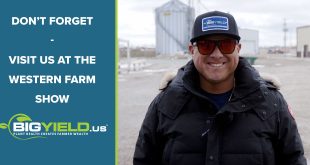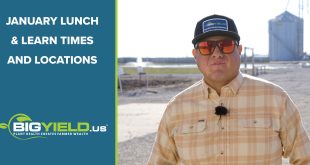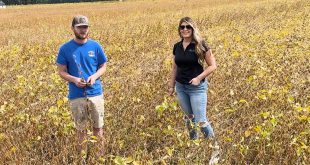Growers will be planting soybeans soon, and we wanted to share our recommendations for raising a high yield soybean crop in 2018. With the continual cold and wet conditions we are having this spring, our seed treatment and in-furrow product for soybeans will be a big help to getting the crop out of the ground. Weed control is another important factor in raising a high yield crop. Lastly, be sure to incorporate yield enhancements into your foliar application plan. Watch the video from John Ortiz to learn more about our high yield soybean program.
Video Transcript
Hey guys, John Ortiz with BigYield.us. Today we are going to be discussing how to attain high yielding soybeans. Last week or the week before we discussed what my thoughts were on how to attain high yielding corn. Some of the things that we are doing in corn we are also doing in soybeans.
The number one thing that I see as beneficial for attaining high yielding soybeans is weed control – to start clean and to stay clean. There are a lot of different things that people are doing, both on the organic side and the normal, conventional farming. A lot of guys are throwing down a pre-emerge herbicide, which is very beneficial. If we can get you guys to start spraying in the fall that is even better to help control some of these winter annuals.
With it being cold and wet like we have been having with the corn, it is going to delay things. We have some guys getting ready to start planting soybeans depending on the area you are at. But definitely start looking at using a seed treatment. We like to use our dry planter box seed treatment that is specially formulated for soybeans. We’ve also got one for corn, but this one is specific towards soybeans. It is an organic approved product – be sure to check with your certifier as well to make sure you can use this product. Again, it is a heck of a product. You over apply it on your normal seed treatment. A lot of you guys typically use a fungicide or insecticide. Depending on if sudden death is an issue you may be using Ilevo or something along those lines. But again, you can over apply it on that when you are planting.
We are a big fan of in-furrow – using liquid fertilizer in the row. We’ve talked a little bit about using the furrow jet cruisers. We have some guys we worked with last year that were putting on anywhere from 10 to 15 gallons in the row with these new furrow jet cruisers. That is one of the things we are looking at and doing some research on – to see the benefits we get from those using the furrow jets as opposed to broadcasting dry fertilizer. We have seen some great things off of that and seen some great data off that as well. We aren’t saying there is anything wrong with using dry, but we like to put everything in the row where that plant needs it. It helps it get out of the ground quickly, and that is half the battle – getting the soybean out of the ground.
Alright, we’ve talked weed control, seed treatments, in-furrow applications, and last but not least – foliar applications. We like to incorporate our BigSweetYield product in everything we do, every time we go across that field. Whether we are doing a burn down, making our first herbicide application. Follow that up at R1 to R3, and some guys are going after that as well. Best bang for your buck on foliar feeding is to apply between R1 to R3 when soybeans are starting to set pods. We like to apply BigSweetYield DB as well, we will come back with that at R1 to R3. If you have to make a rescue trip incorporate the sweetener and some of these other products as well. That is some of the things we have done. We also have some ROI sheets on the website that you guys can see as well.
If you have any questions feel free to reach out and contact us on the web or give us a call. Thank you very much and have a great day.
 BigYield High Yield Soybeans, High Yield Corn, and High Yield Wheat
BigYield High Yield Soybeans, High Yield Corn, and High Yield Wheat



